Research assistant cover letter template
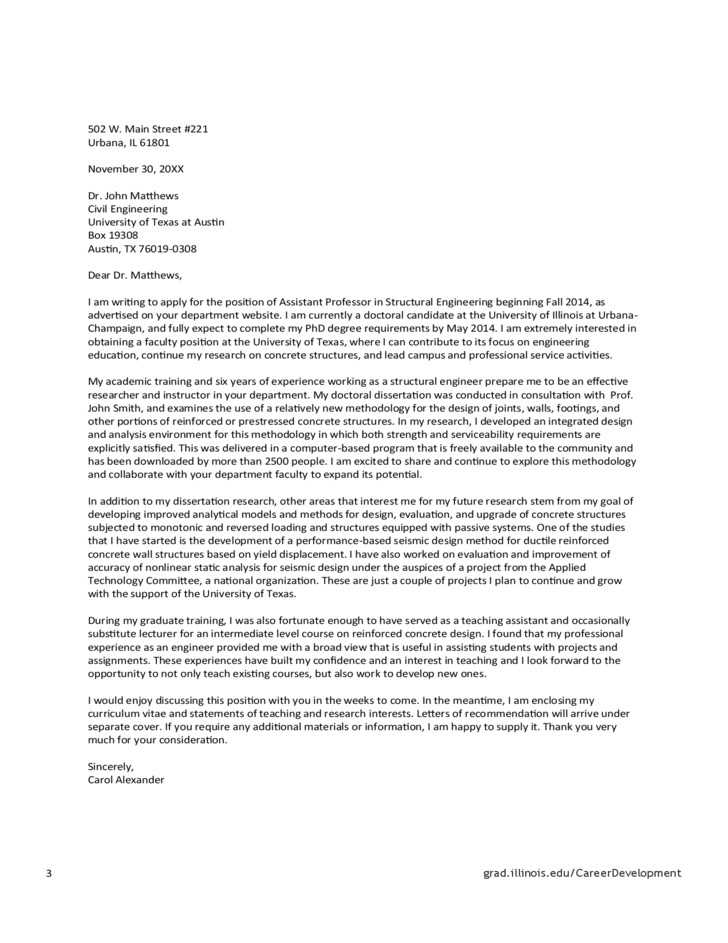
Crafting a strong cover letter for a research assistant position means clearly showing how your skills match the needs of the role. Focus on showcasing your relevant experience, technical abilities, and passion for the research field. Start by addressing the specific qualifications mentioned in the job description, and be sure to highlight any hands-on experience you have with research methodologies, data analysis, or laboratory techniques.
Be specific about your contributions in previous roles. Rather than generalizing your experience, give examples of the types of research you’ve worked on, the tools you’ve used, and the results you helped achieve. Employers want to know exactly how you can add value to their team, so tailor your letter to demonstrate your unique qualifications and achievements.
Keep your tone professional yet approachable. A cover letter is not only about listing your skills but also about conveying your enthusiasm for the role and the research environment. Make sure your letter reflects your genuine interest in the field and your excitement for the opportunity to contribute to the team’s work.
Research Assistant Cover Letter Template
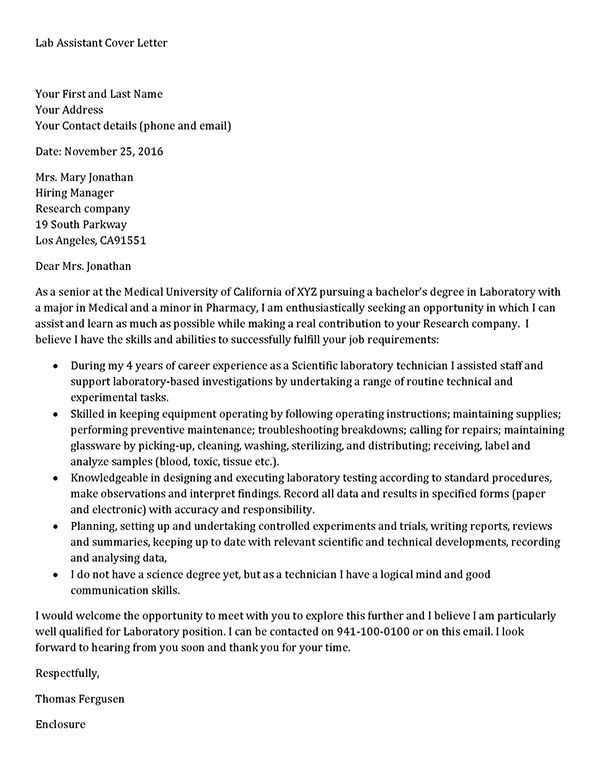
Tailor your cover letter to the specific research assistant role you’re applying for. Highlight relevant skills and experiences that align with the job description. Start by addressing the hiring manager by name if possible, and express genuine interest in the role and the research area.
Introduction
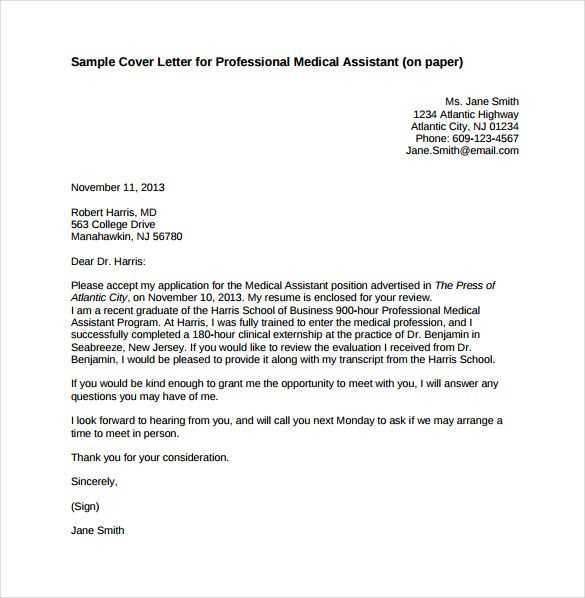
In the opening paragraph, introduce yourself and explain why you’re interested in the research assistant position. Be specific about your background, such as your degree, related research experience, and any relevant coursework. Mention how your interests align with the organization’s research goals.
Skills and Experience

In the body, focus on your key skills and experiences that are most relevant to the position. Provide examples of your research abilities, data analysis skills, or experience working in a lab environment. If applicable, mention any publications, presentations, or research projects you’ve been involved in. Demonstrate how your expertise can contribute to the team and their work.
Conclude the letter by expressing enthusiasm for the opportunity and willingness to discuss your qualifications further. Thank the hiring manager for their time and consideration, and mention that you look forward to the possibility of working together.
How to Format Your Cover Letter
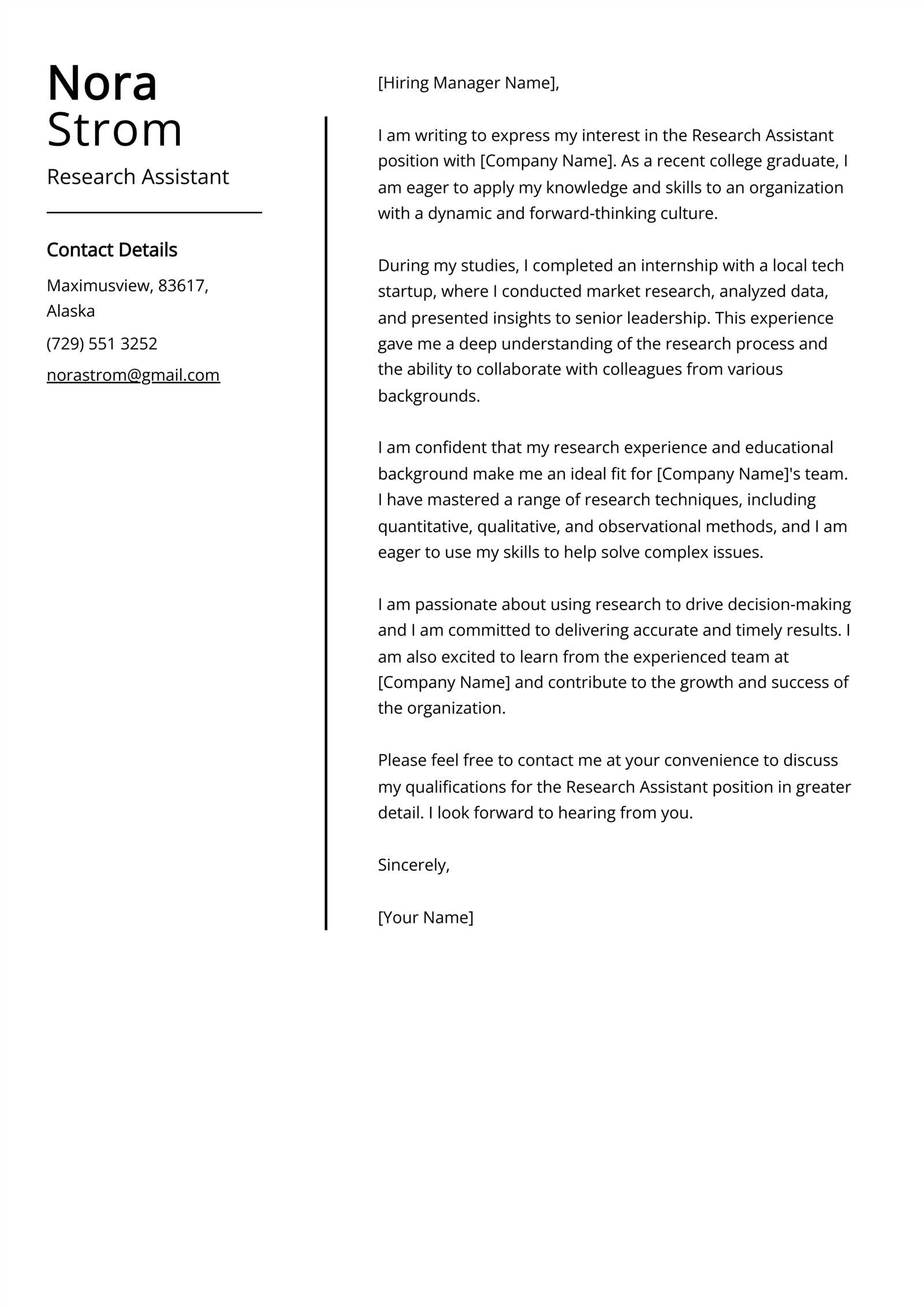
Align the structure of your cover letter with the expectations of employers. Begin with your contact information at the top, followed by the date, and then the recipient’s details. Keep the layout clean, with clear spaces between sections to enhance readability.
| Section | Details |
|---|---|
| Contact Information | Include your name, address, phone number, and email at the top. If you’re emailing the cover letter, this may be placed in the email signature. |
| Date | Place the date below your contact information. |
| Recipient’s Information | List the name, title, company, and address of the hiring manager or department you are addressing. |
| Salutation | Use “Dear [Name]” if possible. If you don’t know the recipient’s name, “Dear Hiring Manager” works well. |
| Body | Keep your paragraphs concise. Start by stating the position you’re applying for, followed by a brief explanation of why you’re a good fit. Highlight specific achievements or skills that align with the role. |
| Closing | End with a strong statement expressing your desire for an interview. Use a polite closing such as “Sincerely” or “Best regards,” followed by your name. |
Focus on clarity and structure. Ensure that each section is clearly separated and easy to follow. This organization will help your letter stand out and make a positive impression.
Key Skills to Highlight for Research Assistant Position
Highlight your ability to work independently and manage time effectively. Research assistants often need to juggle multiple tasks, so showcasing strong organizational skills is key. Show your capability in managing schedules, data collection, and documentation without constant supervision.
Detail your proficiency in research methodologies, whether qualitative or quantitative. A strong grasp of experimental design, data analysis, and the ability to interpret results is highly valued. Be specific about the tools or software you’ve used, such as statistical programs or lab equipment.
Emphasize your written and verbal communication skills. Research assistants regularly prepare reports, presentations, and academic papers. Employers look for candidates who can communicate complex ideas clearly, both in writing and during discussions with team members or supervisors.
Problem-solving skills are crucial. Describe situations where you’ve identified issues during research and successfully developed solutions. This shows your ability to think critically and adapt when unexpected challenges arise.
Lastly, demonstrate your collaboration abilities. Research is often a team effort, and being able to work effectively with others, share ideas, and contribute to collective goals will make you stand out as a candidate. Highlight any past experiences where you worked in multidisciplinary teams to achieve research objectives.
What to Include in Your Experience Section
Focus on specific tasks and achievements in each role you’ve held. Highlight the work that aligns with the research assistant position you’re applying for.
Key Responsibilities
- List your day-to-day duties, but keep them relevant to the position. For instance, if you’ve conducted data collection, emphasize the methods and tools you used.
- Be clear about any collaborations or interdisciplinary work. If you’ve worked with teams or other departments, mention how your role contributed to the overall research.
Accomplishments and Impact
- Share measurable outcomes, such as how your research led to published papers or contributed to significant findings.
- Highlight any presentations, conferences, or workshops where your work was featured.
- If you’ve managed any projects, include specifics on how you handled deadlines, budgets, or coordination efforts.
Always tailor this section to match the job description, demonstrating how your previous roles directly support the skills and expertise required for the research assistant role.
Demonstrating Knowledge of the Research Field
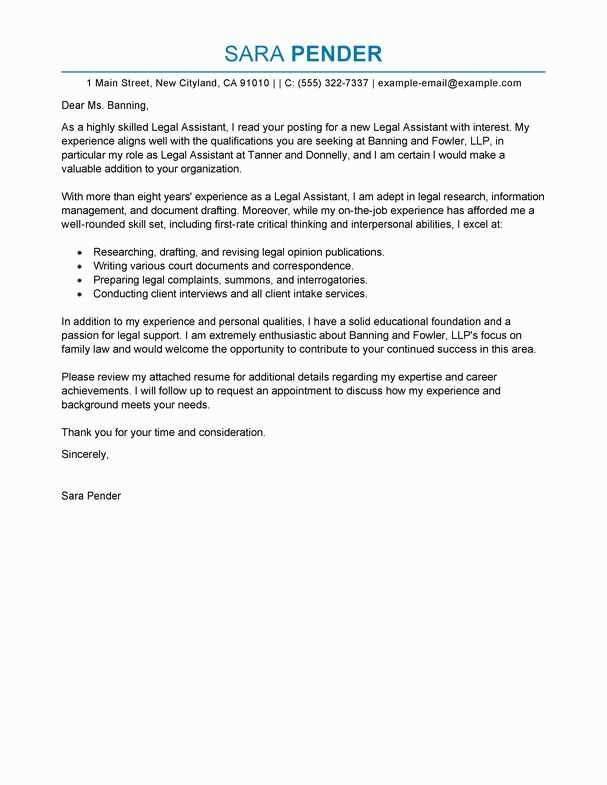
Highlight your understanding of the field by mentioning key theories, trends, or breakthroughs relevant to the research you’re assisting with. Tailor this section to reflect the specifics of the position you’re applying for, showing that you’ve done your homework on the subject matter. Focus on concrete examples and connections to your past experience.
For instance, if the research involves environmental science, mention current challenges like climate change and sustainable energy. Point to specific studies or publications that you’ve reviewed or worked with, demonstrating your grasp of ongoing debates or methodologies used in the field.
- Reference significant authors or researchers whose work has shaped the field.
- Discuss tools or techniques commonly used in the research process, such as data collection methods or lab equipment.
- Show familiarity with any recent publications or research papers related to the topic.
Link your experience to the practical needs of the research. If you’ve worked with data analysis or a particular lab technique, explain how these skills can directly contribute to the research team’s progress. This signals that you’re ready to engage with the research, not just observe it.
Finally, mention any relevant coursework or professional development you’ve completed. This showcases a proactive approach to building your knowledge and skills, ensuring you’re aligned with the field’s expectations.
Closing Your Cover Letter: Best Practices
End your cover letter with a clear, confident statement that invites further conversation. Express enthusiasm about the position and the company, while highlighting your readiness to contribute. Reaffirm your interest in the role and mention that you look forward to the possibility of discussing how your skills align with the team’s needs.
Always include a strong call to action. Rather than just stating you are available for an interview, suggest a specific time frame for follow-up. This demonstrates your initiative and eagerness. Close with a polite thank you, acknowledging the reader’s time and consideration.
Keep your closing sentence concise and professional. Avoid generic phrases like “Sincerely” or “Best regards” if they don’t match the tone of your letter. Instead, opt for something like “Looking forward to hearing from you” or “I am excited about the opportunity to contribute.”
Finish with your full name and contact details, ensuring it’s easy for the employer to reach you. Keep it simple, confident, and direct–this leaves a lasting impression.